World War II
In 1939, the Maine National Guard consisted of the 103rd Infantry Regiment (Portland), the 240th Coast Artillery Regiment (South Portland), the 152nd Field Artillery Regiment (Bangor), Headquarters Company, 86th Infantry Brigade (Augusta), Headquarters Battery, 68th Field Artillery Brigade (Bar Harbor), and a detachment of regimental Headquarters Company and the full Company C, 118th Quartermaster Regiment (Portland), as well as a section of the 43rd Infantry Division staff.
In 1940, General Head Quarters for the Army began to plan for impending conflict, even as the war in Europe was raging. They ordered National Guard divisions into active service in 1941 for one year's service, including New England's 43rd Infantry Division containing Maine's 103rd Infantry Regiment, 152nd Field Artillery Regiment, 86th Infantry Brigade headquarters, 68th Field Artillery Brigade headquarters, and C Company, 118th Quartermaster Regiment. These units all traveled to Camp Blanding, Florida, to participate in maneuvers.
The Louisiana Maneuvers took place in October of 1941 followed by the Carolina Maneuvers in November. The Louisiana Maneuvers took place over 30,000 square miles of training land and 475,000 Soldiers participated, making it the largest military exercise ever held in the United States. The Maneuvers were meant to test the capabilities of the U.S. Army and test new doctrine and equipment. All units gained extensive experience from the Maneuvers, as well as from additional training held at the division, brigade, and regiment levels.
The Empire of Japan attacked the United States at Pearl Harbor on December 7, right after the Carolina Maneuvers ended, and suddenly the U.S. was at war. Reorganization came in February of 1942. All Army Divisions were reorganized and brigades were decommissioned. The 86th Infantry Brigade was disbanded and the personnel were merged with the headquarters of the 103rd Infantry Regiment. Additionally, artillery regiments and brigades were disbanded. Headquarters for the 152nd Field Artillery was redesignated the 203rd Field Artillery Group and removed from the 43rd Division. First battalion, 152nd Field Artillery was redesignated the 203rd Field Artillery Battalion and also removed from the 43rd Division. The second battalion was designated the 152nd Field Artillery Battalion and teamed with the 103rd Infantry to make the 103rd Regimental Combat Team. The Headquarters Battery, 68th Field Artillery was redesignated the Headquarters Battery, 43rd Division Artillery. In addition, the 118th Quartermaster Regiment was turned into a battalion. Company C was designated the 142nd Transportation Company and was removed from the 43rd Division.
103rd Regimental Combat Team
The 103rd Regimental Combat Team completed their training at Camp Shelby, Mississippi in the summer of 1942 and then moved to San Francisco. They embarked from here on October 1, 1942 for New Zealand. They landed at Auckland after a three week voyage and disembarked to the strains of "The Maine Stein Song" being played by a local band. From here, they moved to New Caledonia to act as a screening force in February of 1943. They soon moved to Guadalcanal, where they arrived in time to take part in some mopping up operations.
Their first significant action was in the Solomon Islands, on the Island of New Georgia. On June 22, the 103rd Infantry began a series of landings on the island in concert with other units from the division. The 152nd landed shortly thereafter and set up batteries in support of each infantry battalion. The battle for control of the island was vicious, as the infantry slugged it out in the jungle, fighting the enemy as well as their environment. Hundreds fell sick from disease while many more were killed or wounded in the savage fighting. The 103rd moved from a generally supporting role early in the campaign to the primary attacking force by the end. The savage fighting took its toll on the division, but by August 5, 1943, the island was in U.S. hands. After a time to rest and refit, the 103rd moved with the rest of the division to New Guinea.
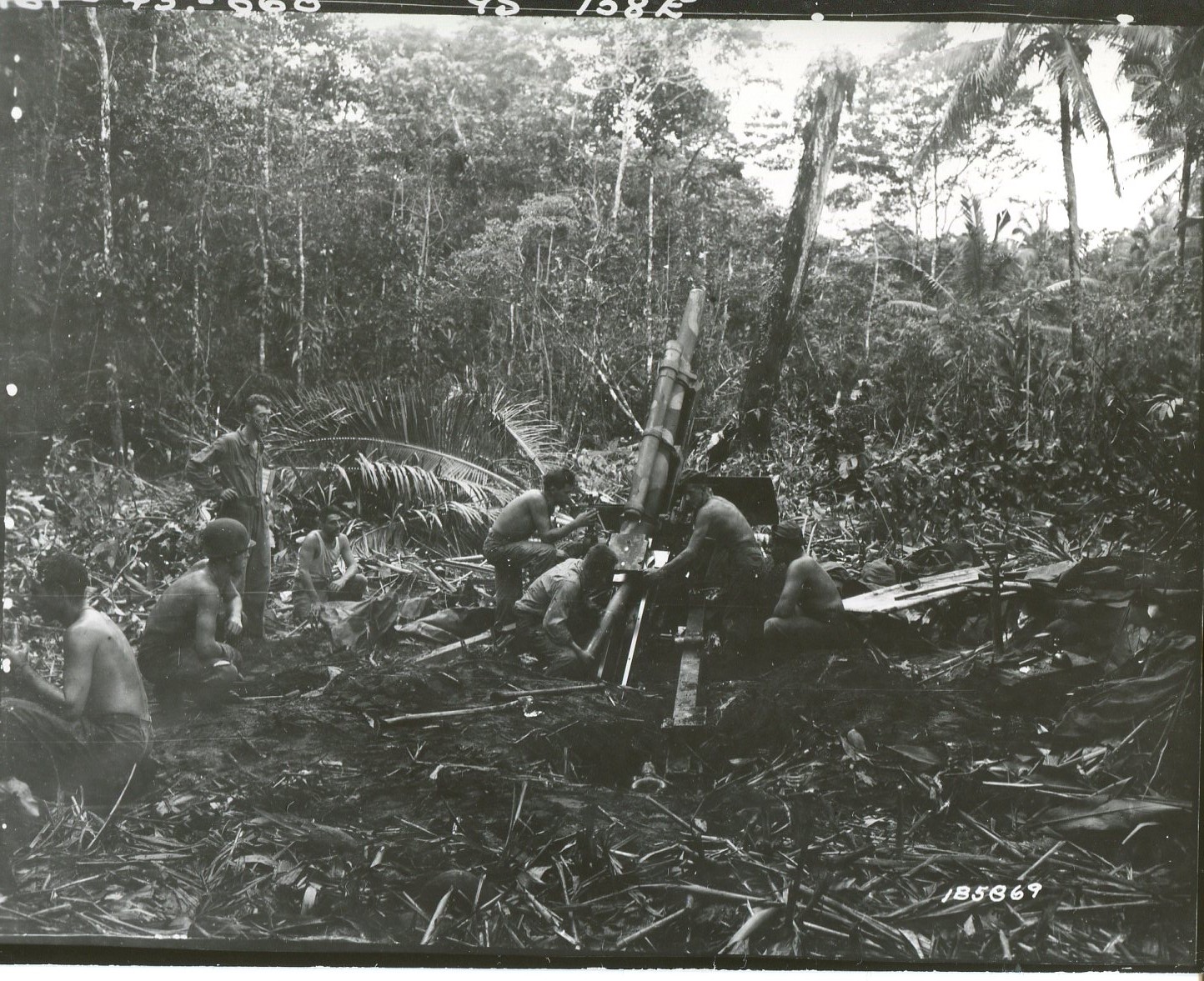
The 103rd RCT had a small role to play in the New Guinea Campaign, acting as a combat support element during most of the fighting. The 152nd Field Artillery did take a more active role by supporting infantry on Aitape and along the Drinumor River with fire missions.
The 103rd RCT lead the drive into the Philippines at Luzon, landing on January 9th, 1945. As the left wing of the invasion force, they pushed inland, encountering stiff opposition from fanatical Japanese enemies. The 103rd RCT was on the attack for over a month on the Lingayen Plain, working to reduce enemy strongpoints. Infantry encountered enemy tanks and soldiers in day and night confrontations, as well as heavy enemy artillery fire. The 152nd engaged in both counterbattery fire as well as suppressive fires to protect the infantry. They came off the front lines in February for a few weeks of rest, before infiltrating enemy positions at night and conducting a surprise attack against the Japanese Shimbu Line. They then swung into the highlands and engaged the enemy in fighting that was often cave-to-cave. The 152nd became adept at high-angle fire designed to strike enemy positions that were well dug-in. On May 9, the 103rd was one of the first units to secure the Ipo Dam, a strategic location that contained 30% of Manila's water. The 103rd and 152nd received the Philippine Presidential Unit Citation for their actions on Luzon.
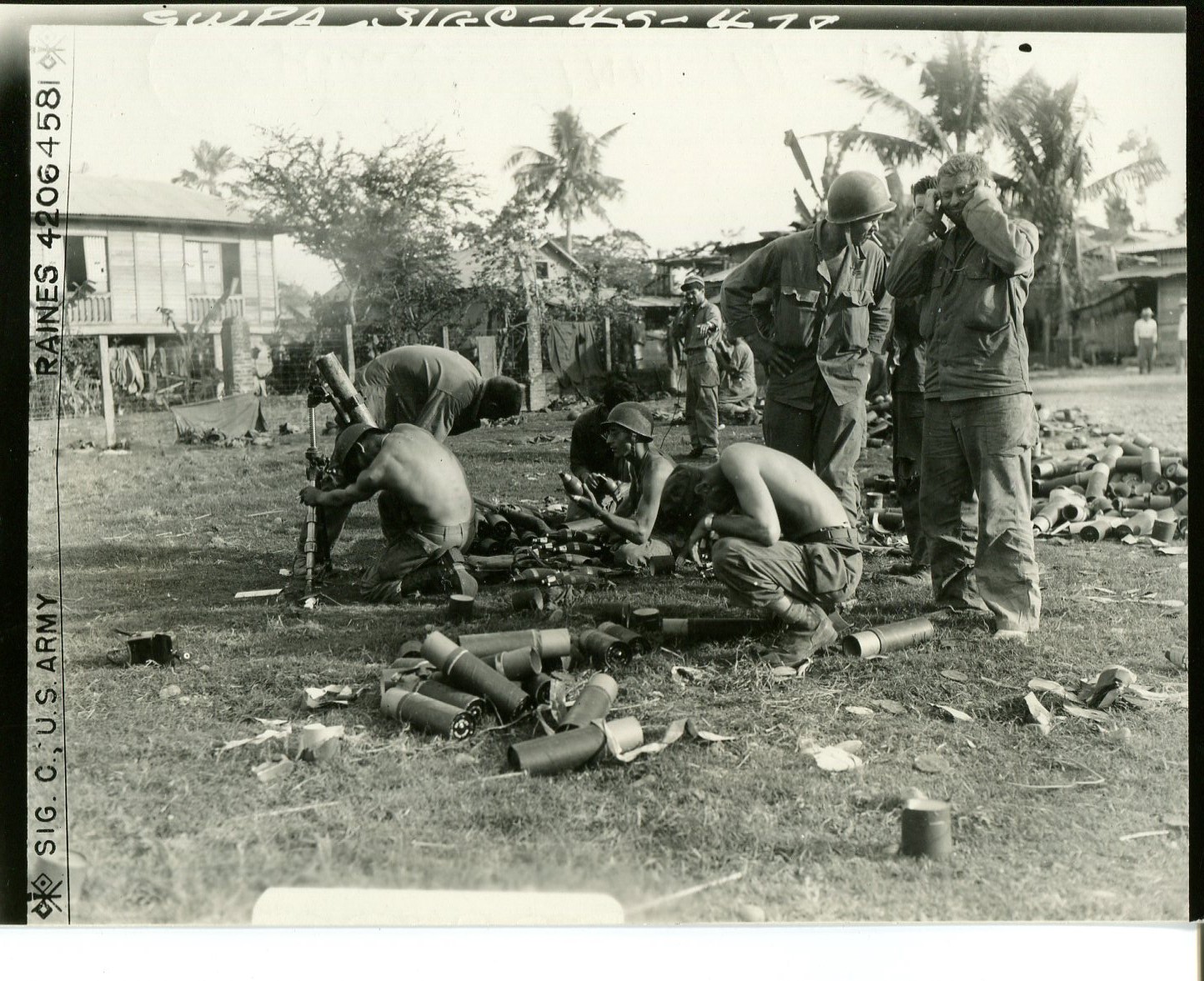
The 103rd RCT was preparing for an assault on the home islands of Japan when the war ended. They were assigned occupation duty around Tokyo in September, but were quickly relieved and sent home.
203rd Field Artillery Group
The 203rd Field Artillery Group was now an artillery brigade headquarters that would have various artillery battalions assigned to it throughout its wartime service. It landed at Normandy on Utah Beach on 3 and 4 September, 1944. It assumed the command of three artillery battalions and began combat operations. It coordinated fires on German troop and armor concentrations, as well as on enemy defensive positions. They also fired interdiction and counterbattery missions. During October, the Group participated on the drive into the Verdun Region and the reduction of the defenses of Fort Driant. During this time, they traversed the same ground the 103rd Infantry had in World War I.
As time went on, the 203rd Group began encountering stiffening resistance as well as ammunition shortages for their battalions' guns. To solve this, they integrated German 155mm guns into their batteries and used captured shells to supply them. By October, they had helped take the fortress at Metz and were firing into Germany itself, supporting the advance of the 90th and 95th Divisions. They were engaged in supporting these divisions as they breached the Siegfried Line and crossed the Saar, and then further into Luxembourg and Belgium, when the Germans counterattacked in the Ardennes on December 17, 1944.
The 203rd assisted in checking the German advance, with fires on troop concentrations, and then with throwing the attackers back. They assisted the 26th Division Artillery with supporting fires on the south flank of the German incursion, and by the end of the month were on the offensive again. They were specifically targeting German transport vehicles to deny them the opportunity to haul their artillery out of danger. During this period of the Battle of the Bulge and counterattack, the 203rd Group's battalions fired 19,665 rounds in December and 39,971 rounds in January, more than double their monthly average to date. The Group received commendation as part of the III Corps from 3rd Army commander, General George S. Patton, jr.
Through the spring, the 203rd Group continued supporting the advance of the VIII Corps and the 6th Armored Division into Germany. Fire missions were called in for destroying enemy pillboxes or artillery positions. In March, the 203rd crossed the Rhine River and threatened the Ruhr Valley, a German industrial center. During April, the Group was advancing so swiftly that they abruptly ran into a heavy German force of armor and infantry. The battalions dropped trails where they were and began firing off estimated calculations using makeshift Fire Direction Centers. Remarkably, the artillery placed accurate and immediate fire on the German force, destroying it entirely. By May, the German army had collapsed under the Allied attack and Germany had surrendered. The 203rd took up a position in Eisenach for occupation duty on May 12. The 203rd Group was disbanded upon its return from the European Theater of Operations. Its lineage is currently carried by the 133rd Engineer Battalion.
203rd Field Artillery Battalion
The 203rd Field Artillery Battalion landed on Omaha Beach, Normandy in phases, from June 23 to the 30. The batteries were firing almost immediately after the landing in support of the American infantry and tanks fighting through the "bloody bocage." On July 5, the 203rd was attached to the 30th Infantry Division and given the mission of supporting their advance across the Vire River. A massive German counterattack caused round-the-clock fire missions for the 203rd. After firing 2,400 rounds, the 203rd finally halted the enemy. Their next task was to bludgeon the German defenders of St. Lo into submission, which they did by the end of July.
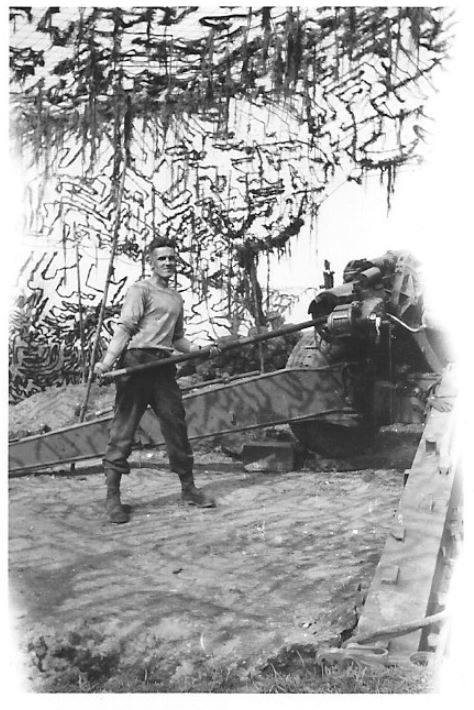
August brought rapid forward movement for the battalion as they kept pace with the infantry. They crossed the Seine River on August 28, firing constantly against enemy troop formations. The battalion was in Belgium by September 6, going into camp near the famous battlefield of Waterloo. They conducted fire missions across the Meuse River of World War I fame, and even acted as infantry to relieve some tired grunts on the front. Holland was next for the battalion and on September 19, the battalion was dropping shells onto the famed Siegfried Line. They took part in the attack that broke the Siegfried Line, which began on October 2, 1944. The battalion fired colored smoke rounds during this operation to mark targets for strafing P-47s. The Germans were heavily dug in and using the well-made stone houses of the area for defense. The 203rd fired many concentrations of high explosive rounds to crush German defensive positions and open the way for the American infantry. One gun fired so many rounds that its trail disappeared into the mud and it took three vehicles to pull it out of the ground.
The battalion crossed into Germany in early October, taking part in the rush towards the Roer River. But late November saw the forward progress stalled, as the German counter-offensive in the Ardennes funneled allied units from other sectors to try to stem the enemy tide. The 203rd took an active role in breaking the German offensive as well as pounding enemy defensive positions during the Allied counter-attack. On December 21, they took up positions in the Rotgen Forest and began firing heavy concentrations. As one soldier who was present with the battalion wrote, "We celebrated Christmas Eve by firing plenty. If Jerry hung up his stocking, we filled it with HE (High Explosive)."
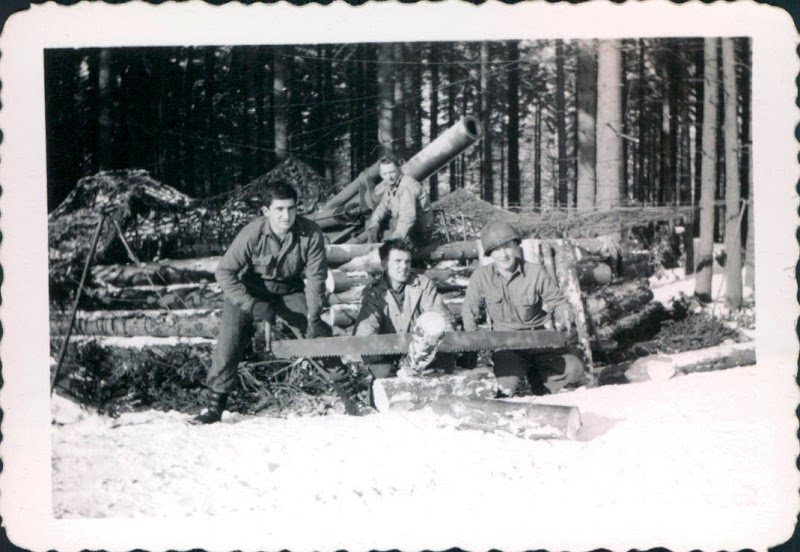
By January, the Bulge had been broken by the Allies and they were pushing onward again. The 203rd crossed the Roer River on February 25, 1945. They were continuously on the move through February and March, firing the whole way. Throughout the entire campaign they were subjected to German counter-battery fire as well as attack from enemy aircraft. By April, they were advancing at the spearhead of the Ninth Army and in some cases were directly behind the foremost tanks entering German towns. They assisted in the taking of Magdeburg, and were firing right into May, when the Germans collapsed and the war in Europe ended.
The battalion fired approximately 68,000 rounds, traveled 800 miles, crossed six major rivers, and was in combat 318 days, less five days rest periods.
The lineage of the 203rd Field Artillery Battalion is carried on today by the 185th Engineer Support Company.
240th Coast Artillery
The 240th Coast Artillery was activated for stateside service during the war, and was divided up into the 185th and 186th Coast Artillery Battalions in 1943. The two battalions were part of the Harbor Defenses of Portland, manning the long range guns covering the approaches to the harbor as well as the minefields that protected the harbor. Their lineage is carried on by the 133rd Engineer Battalion.
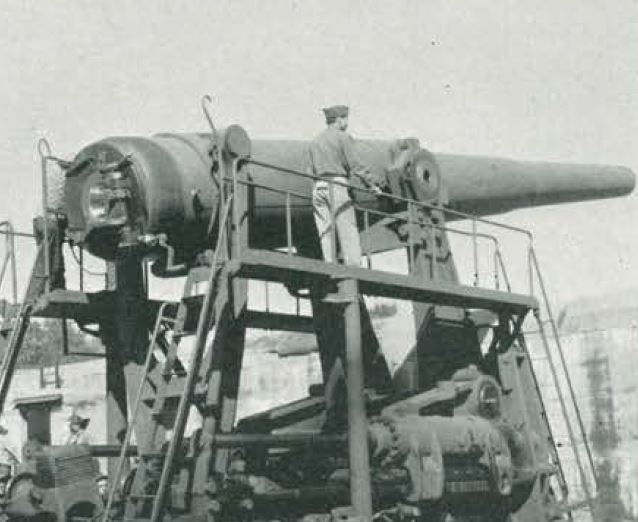
142nd Transportation Company
Company C of the 118th became the 142nd Transportation Company and was stationed in Iceland from August of 1942 to August of 1945.
Post-War
In 1947, with the establishment of the Department of Defense, the Maine Air National Guard was born as a Reserve Component of the US. Air Force. Henceforth the name Maine National Guard is inclusive of both the Maine Army and Air National Guard.
The force structure of the Maine National Guard in 1946 included the 103rd Infantry Regiment, 152nd Field Artillery Battalion, 203rd Field Artillery Battalion, 142nd Transportation Company, 185th Coast Artillery Battalion, 186th Coast Artillery Battalion, and the 136th Engineer Company (newly formed with no World War II campaign credit).
Maine campaign credit for World War II includes: Guadalcanal, New Guinea, Northern Solomons, Luzon (with arrowhead), Normandy, Northern France, Rhineland, Ardennes-Alsace, Central Europe, and Leyte.
Maine Army National Guard units with campaign streamers from World War II include: 120th Support Group, 133rd Engineer Battalion, 136th Engineer Company, 152nd Maintenance Company, 185th Engineer Company, 262nd Engineer Company, 251st Engineer Company, and the 195th Army Band.